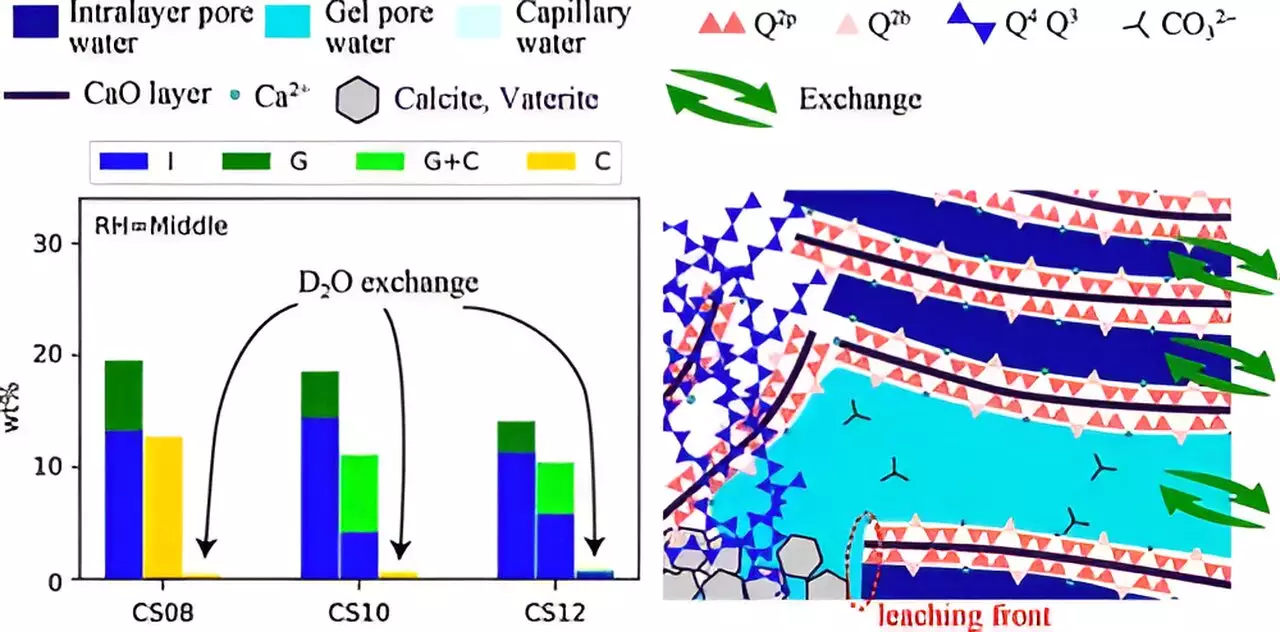Carbon dioxide (CO2) is a significant contributor to global warming, driving the urgent need for effective solutions to combat climate change. With increasing industrial activity adding to atmospheric CO2 levels, researchers are examining innovative methods to mitigate this impact. One particularly promising avenue is the study of cement-based materials and their potential to sequester atmospheric CO2 through a process known as carbonation. This process not only captures CO2 but also transforms it into stable minerals, offering a dual advantage of reducing greenhouse gases while improving the properties of cement-based products.
The carbonation of cement paste involves several intricate chemical reactions. Initially, CO2 dissolves in water, which is then transported into the cement matrix. Here, it interacts with calcium silicate hydrates (C–S–H) that are formed during the hydration of common raw materials. The reaction leads to the formation of carbonate ions (CO32-), which subsequently react with calcium ions (Ca2+) present in the C–S–H to produce calcium carbonate precipitates. Despite numerous studies exploring this mechanism, a comprehensive understanding remains elusive. This is mainly due to the complexity of the cement matrix, which exhibits unstable characteristics.
Recent research has identified key factors influencing the carbonation process, including relative humidity (RH), CO2 solubility, and the calcium-to-silicate (Ca/Si) ratio of the cement matrix. These factors play a crucial role in determining the effectiveness of the carbonation process and offer insight into how different environmental conditions can optimize or hinder CO2 absorption.
A recent study led by Associate Professor Takahiro Ohkubo and his multidisciplinary team investigated the carbonation mechanisms in-depth, focusing on varying Ca/Si ratios and RH conditions. By utilizing advanced techniques such as 29Si nuclear magnetic resonance (NMR) and 1H NMR relaxometry, the researchers were able to study water transport within the C–S–H structures at a microscopic level.
Their work, published in The Journal of Physical Chemistry C, aimed to unravel the complexities associated with carbonation in cement materials. One of the methodological advancements included the use of accelerated carbonation tests under controlled environments with 100% CO2, considerably higher than typical atmospheric levels. This approach simulates the natural carbonation process, which occurs over decades and is challenging to replicate in laboratory conditions.
The researchers synthesized C–S–H samples under different RH conditions and varying Ca/Si ratios to gain insights into the carbonation process. The findings revealed that the structural integrity of the C–S–H matrix plays a pivotal role in determining the effectiveness of CO2 uptake. Specifically, lower relative humidity and higher Ca/Si ratios led to smaller pore sizes within the cement matrix, thereby limiting the leaching of both Ca2+ ions and water. This, in turn, inhibited efficient CO2 absorption, highlighting a delicate balance between structural composition and carbonation efficiency.
The investigation underscored the importance of both structural modifications and mass transfer dynamics during the carbonation process. It became clear that focusing solely on one aspect could overlook the intricate interplay between how the material’s structure affects ion transport and overall carbonation effectiveness.
The implications of this research extend beyond the academic realm, offering significant potential for the construction industry and environmental sustainability. As Associate Professor Ohkubo pointed out, the development of new building materials capable of effectively absorbing atmospheric CO2 could revolutionize how we tackle emissions from construction activities. Furthermore, understanding the carbonation reaction can also be applied to organic matter, enriching our knowledge about carbon processes occurring in natural environments.
The findings from this innovative research provide a deeper understanding of the carbonation reaction in cement-based materials, presenting an exciting pathway toward practical solutions for CO2 reduction. By leveraging structural characteristics and optimizing environmental conditions, the construction sector can move toward more sustainable practices, fostering a greener future for urban development and global climate management.

